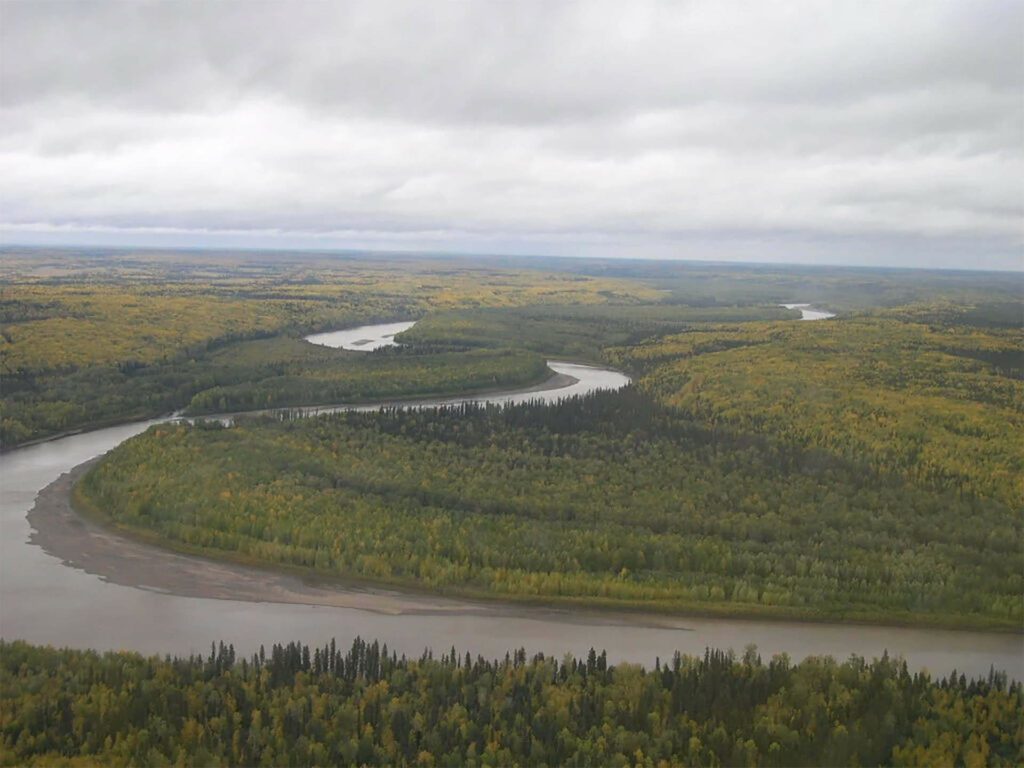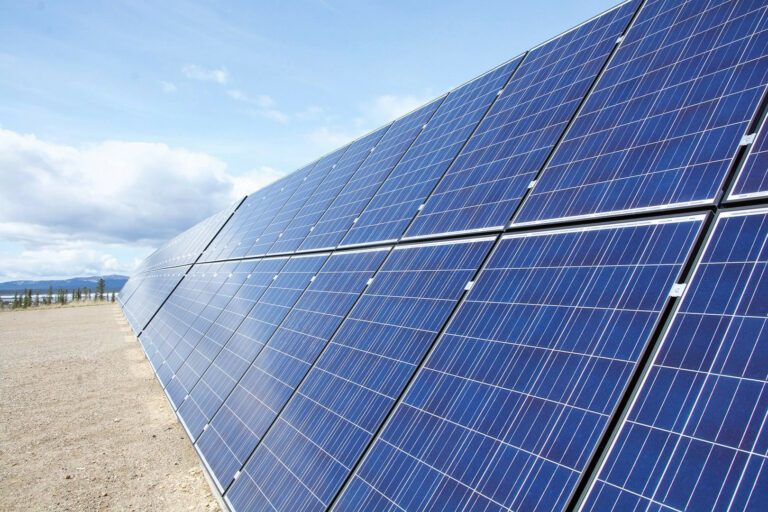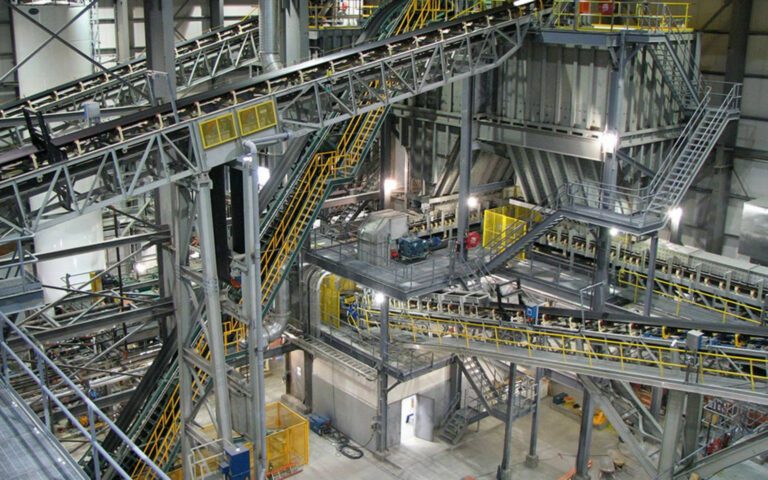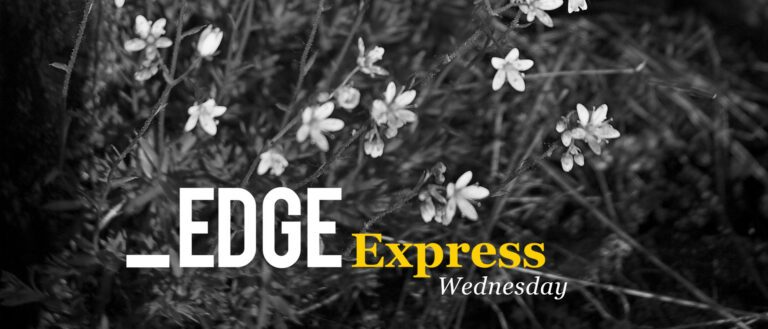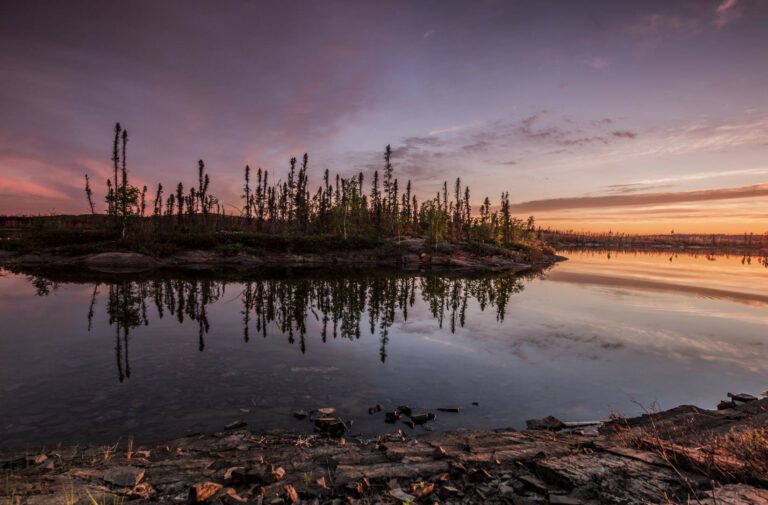Deep beneath the mountains in the southwest corner of the NWT lies a natural gas motherlode. According to a new, widely reported geological assessment released yesterday, the Liard Basin, which lies across the NWT, Yukon and B.C. border, has some 219 trillion cubic feet (TCF) of recoverable natural gas; to put that into perspective, the NWT portion of the field alone contains enough natural gas to meet Canada’s total gas consumption (based on 2014 levels) for more than 24 years.
For proponents of the territory’s petroleum industry, the assessment – done by the National Energy Board, the NWT and Yukon Geological Surveys and the BC Oil and Gas Commission – is certainly good news. As Kathryn Fiess, Manager of Petroleum Geosciences with the department of Industry, Tourism and Investment, put it: “we felt that we had a good resource, but you just don’t know until you crank out the volumetric numbers.”
That said, the announcement comes as petroleum prices hit historic lows with no relief in sight and oil and gas companies flee the NWT in droves, while anti-frackers – the gas would have to be extracted using hydraulic fracturing – are already expressing strong opposition to any talk of exploiting the reserves.
How realistic are the prospects of anything actually happening with these findings? Here are the facts behind yesterday’s announcement:
What’s actually in the ground?
The NWT portion of the gas field, just shy of 80 TCF of recoverable gas, lies in two shale groupings – the Upper Besa River/Exshaw shale and the Lower Besa River/Horn River shale – stacked on top of each other several thousand of meters underground. The only way to access the gas is through wells driven kilometres underground and then out horizontally, where the shale would be opened up with multiple hydraulic fracks.
The region has seen oil and gas development before; around 80 conventional wells were dug between the 1960s and 1990s. But these were tapping relatively small reserves – “about half a TCF, and most of that gas has been produced out,” says Fiess – and the only recently active project in the Dehcho, Strategic Oil & Gas Ltd’s Cameron Hills site east of the Liard Basin, ceased production in 2015.
Previous development means there is some pipeline and road infrastructure already in the region. That said, “if there is successful development there, there would be a lot of gathering systems [i.e. transportation and storage infrastructure] that would need to be created,” says Fiess.
The Liard versus the Sahtu
Over the last number of years, most of the NWT’s oil and gas exploration happened in the Canol and Bluefish Shales in the Sahtu region, although this has slowed to almost nothing since the oil price rout. Even when the market was hot, there was much made about the distance to markets and lack of infrastructure in the region. The new find in Liard is in a slightly better position, both in terms of infrastructure and, more importantly, because of its proximity to Alberta and B.C.
“When gas prices rebound and you see the drilling increase in the Liard Basin, assuming there’s a market that they can produce into, quite literally, your infrastructure is going to come to your doorstep, it will stop at the border,” says Fiess. “If there’s a market and that gets developed, there will be pipelines, roads, all associated with that development. There may be plants.”
Fiess was loathe, however, to compare the prospects of the Sahtu and the Liard Basin; the Liard Basin is all natural gas, while the Sahtu shales appear to contain much more oil in their mix, meaning that there are different economic factors at play in determining each region’s viability.
Can it be developed?
In short: prospects aren’t great. Petroleum prices are far too low to invite exploration or development capital, especially to a remote and expensive-to-develop region. “The persistent low price of natural gas continues to put pressure on producers and is leading to decreased capital expenditures and reduced number of wells drilled in Canada, a trend which has already been observed over the last few years,” reads Natural Resources Canada’s 2015-2016 North American Natural Gas Market Outlook. “Between January and July 2015, the number of wells drilled decreased by 22% compared to the same period last year. “
According to Martin King, a Calgary-based analyst at FirstEnergy Capital Corp. quoted in the Globe and Mail yesterday, gas prices would need to be above $4 (U.S.) per million British thermal units before any investment started flowing north to the Liard Basin. By comparison, U.S. gas prices were at $1.86 per MMBtu on Wednesday.
“I saw a forecast last night that [prices wouldn’t return to a viable level] until the late 2020s, but honestly, you don’t know what’s going to happen globally that could drive things,” says Fiess. “But right now it looks like it’s going to stay soft for a very long time.”
There’s also the issue of finding markets for Liard gas, even if prices were to increase dramatically. The Canadian market is already well-served, and our only export market is the U.S., which is now almost entirely self-sufficient due to rapid development of its own shale gas resources. The much-discussed LNG export port in Kitimat could open up overseas markets – something which “certainly is [necessary] for the Liard Basin and the Horn River Basin,” says Fiess.
But the Kitimat port is far from a sure thing. And as the Globe noted, “None of the 20 export proposals in [B.C.] has received final approval from their backers.”
What’s the GNWT doing with the news?
We may be years if not decades away from a price rebound, but the GNWT is trying to get the legislative groundwork in place for the next boom.
In their recent mandate letter, the new Legislative Assembly committed to reviewing legislation taken over from the Feds after devolution, which includes the Petroleum Resources Act and the Oil and Gas Operations Act. The way companies bid on land is also getting an overhaul, Premier Bob McLeod announced on Wednesday in Calgary.
“Instead of having a ‘call for nomination’ where companies have six weeks or so to submit their bids [on parcels of land], we’ve gone to ‘always open process,’ where industry can at any time during the year give notice,” says Ian Butters, acting director of the Petroleum Resources Division.
Aside from regulatory changes, ITI’s Fiess suggested “there may be room to think about some smaller projects… feeding our internal Northwest Territories market, perhaps.
“By the time your prices rebound in a major way, you’ve already set the stage, you’ve got people who are used to developing for our own internal needs, but again that’s me thinking outside the box.”
The F-word
It has to be said, any development of the Liard Basin, in the short or long term, will inevitably involve competing political passions. Yesterday’s announcement drew immediate criticism from prominent anti-frackers like Lois Little of the Council of Canadians, who told the CBC: “The evidence is mounting of the peril of fracking… Our water systems are connected. We are part of that landscape.”
Fiess readily admitted that “it’s important to understand where your freshwater resource is and not be fracking right below it, by any stretch of the imagination.”
“But when you look at the depth of the wells and where they will be taken horizontal and how large of a frack in terms of the frack height it would be, you’re not fracking anywhere close… you’re probably two kilometres away from your shallow water zones.”
Given current conditions, the argument is moot, at least for the time being. But as the debate over fracking regulations showed last fall – with its sizable petition forcing then-ITI minister Dave Ramsay to backpedal – any mention of the practice can and most likely will make for explosive politics.

